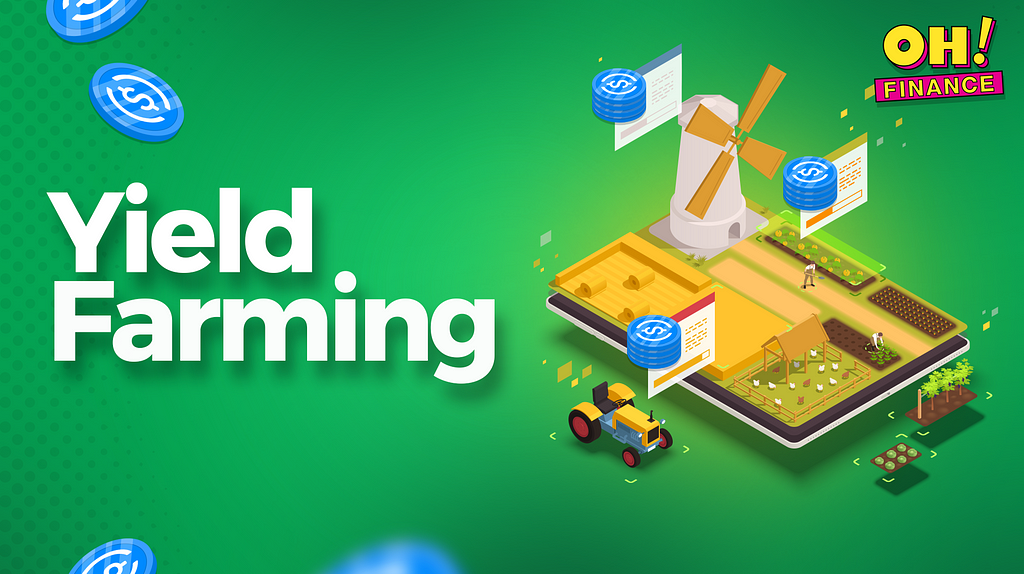Index yield farming in DeFi with Oh!

There are several ways to grow your money in crypto without trading: You may have heard of yield farming, lending, liquidity mining, liquidity pools, staking, etc. And variants exist behind some of these concepts. If you are new to crypto, you may be unsure what this all means. Each of the possible formulas entail inherent risks, although when the markets are buoyant, or a token doing well, some of the strategies can generate higher profits than others. And conversely, a token losing value or the market turning sour after you entered, it can wipe you out or greatly diminish the total value of your assets you have committed.
One form of yield farming is basically lending assets in return for incentives, aka rewards, aka yield. You are essentially acting like your own private bank: Lend by depositing on a platform in return for interest. What you get in return depends on the type of yield farming and what is emitted as rewards: It can be a project token (quite often a governance token like OH or AVAX or JOE) or stable coins.
Index investing is a passive investment approach to gain exposure to markets. It has become very popular in traditional equities, as investors use this buy-and-hold strategy to avoid purchasing different components individually, but use this type of investment vehicle to match the returns of a different products with less complexity and tracking/balancing of those assets.
Leveraged borrowing
Other popular DeFi protocols for yield farming, like Aave or Curve, are to borrow an asset in exchange for collateral, “leveraged” borrowing in other words. You invest the borrowed asset targeting that you will grow your investment quicker because you engaged capital with some risk.
Example: You deposited $10,000 ETH and borrowed $5,000 USDC, then traded that for ETH. You will get the equivalent of $15,000 exposure in ETH, compared with your initial capital of $10,000 if you didn’t borrow.
When is it favorable for you:
- If ETH climbs in value, you can service your debt and get a nice profit in return when you claim your collateral back, much more than if you didn’t borrow. Let’s say you didn’t borrow and you sold your ETH initially valued at $10k for $20k, which means $10k profit. By borrowing, the total value when you sold would have been $30k, you would made $15k profit after servicing your debt, reclaim the lended ETH and sold that as well.
When is it not in your favor:
- ETH drops in value. You can’t service your debt and the platform gets to keep your collateral by automatically setting some thresholds, you have been “liquidated”.
The risks of losing your collateral depends essentially on what you deposit and what you borrow in return: When it’s not 100% in stable coins, there is always at risk of being liquidated due to the large short price fluctuations very common in crypto. While stable coins do have some inherent risk as well, the price fluctuations have a lower risk profile, are further supported by arbitrage and the intended purpose of peg to value.
TVL and Incentives
Lending protocol incentivizes lending of assets in return of yield: They want to lock capital (for “Total Value Locked”, an essential evaluation of a protocol popularity). Higher the TVL is, the more they can lend. Your yield returns depends on the incentives set by the platform, how much capital your deposited represents in comparison to the other lenders for the same rewards pool (= your share percentage compared to the others).
What does Oh! Finance do?
- Indexing! Our primary product works by leveraging multiple underlying protocols, Oh allows users to balance their risk profile across multiple high yield outputs, and balances across those components. This also provides a tax advantage, in that your investment into the platform won’t trigger exit fees or taxable events incurred by manually balancing your portfolio.
- By putting your USDC.e in the Oh! Finance product, it replaces you as a human, to take advantage and optimize on your behalf balanced yield returns on underlying components such as Banker Joe, Benqi, Curve Finance, Aave as introduced by the team and DAO. This approach balances risk and return, along with tax strategy for those looking for steady appreciation of stable coin assets.
- Oh Finance strategies involving lending and leveraged borrowing, the current roadmap and upcoming strategies only use USDC.e or stable tokens. This is for both as collateral and as borrowed assets again to minimize risk.
- Looking forward, Oh plans to release strategies that have some light leverage on stable coins, for higher performing APYs for those looking at slight different risk profiles, but to retain the ability for indexing and tax event planning. These strategies are being tested and the team is excited to release!
About OH! Finance
Oh! Finance is an optimized yield-generation protocol, focused on reducing risk and increasing volume exposure. Start earning industry-leading interest rates on stablecoins in just a few clicks: https://oh.finance
Follow us on:
| Oh! Finance | Oh Finance! documentation |
| Twitter | Telegram community | Telegram announcement |Blogger |
Original post here: Index yield farming in DeFi with Oh!
Comments
Post a Comment